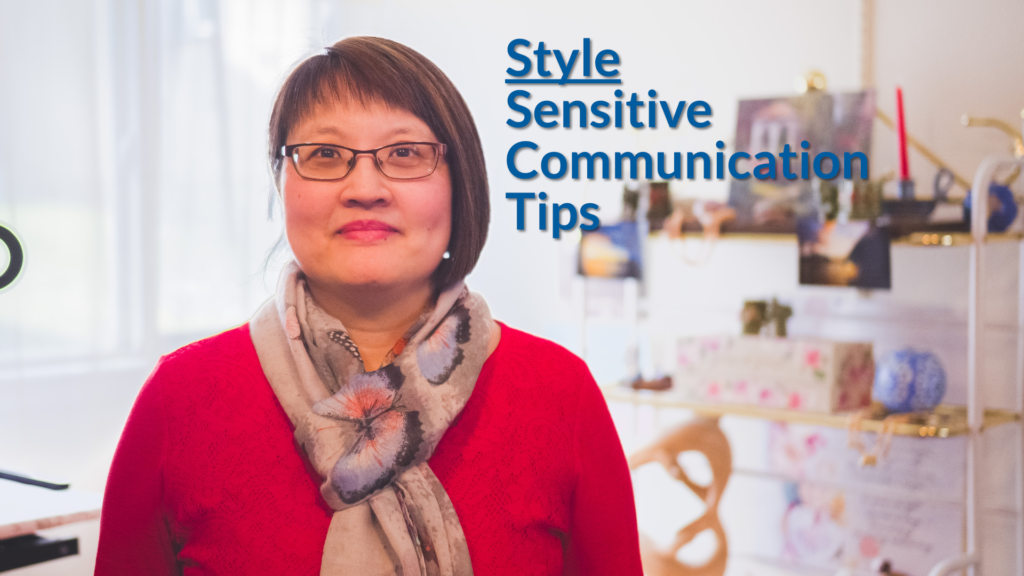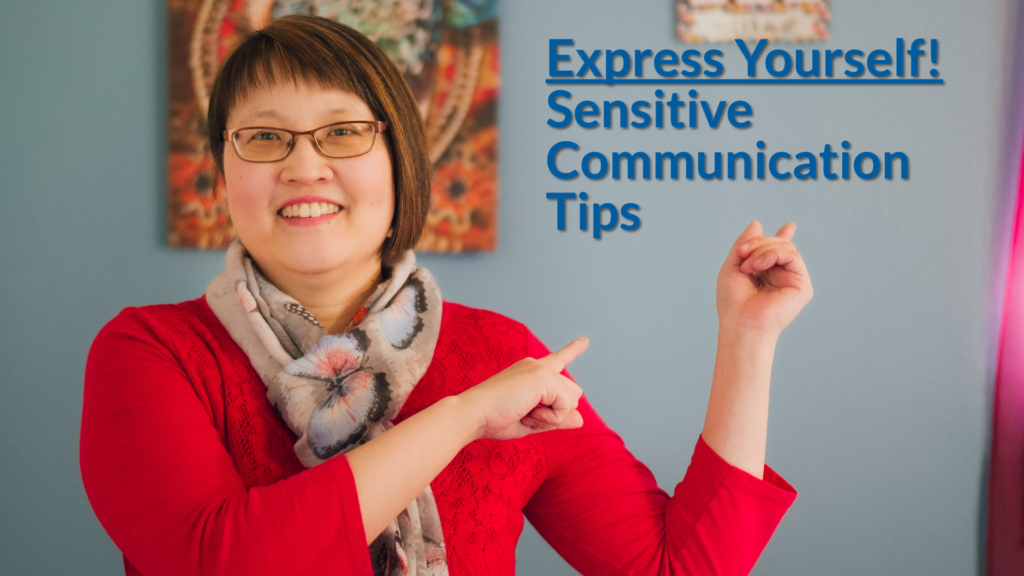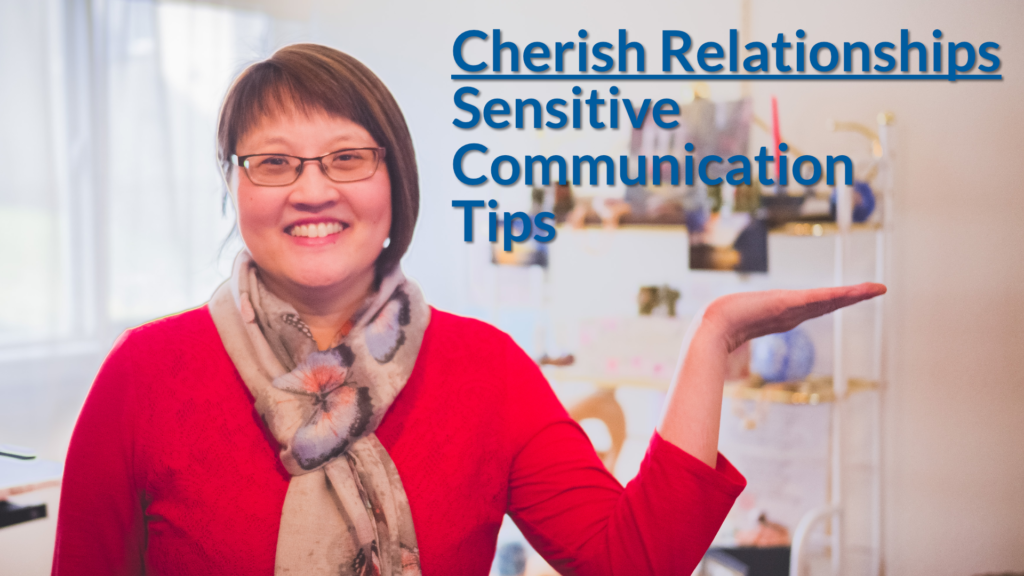Deep Dive on Style | Sensitive Communication Tips

https://vimeo.com/783107769 Hi there, this is Grace, and welcome to Sensitive Communication Tips. So in the previous video, I went through the acronym COMMUNICATES. So all the necessary components in the word communicates what each of those letters represent in the word communicates all the components that is necessary to have an effortless and effective communication. […]
Style | Sensitive Communication Tips

https://vimeo.com/778537189 Hi there, this is Grace, and welcome to Sensitive Communication Tips. So before I jump into today’s topic, I want to do a quick review of all the letters in the word COMMUNICATES. So I use the acronym COMMUNICATES, and took apart each of the letters to represent what is needed– all the components […]
Deep Dive on Expressing Yourself | Sensitive Communication Tips

https://vimeo.com/768742463 Hi there, this is Grace, and welcome to Sensitive Communication Tips. So today we’re going to do a Deep Dive on Expressing Yourself. And again, expressing yourself. And this case is about nonverbal communication. And with nonverbal communication, we’re talking about facial expression, and body language. So facial expression is all about the face. […]
Express Yourself | Sensitive Communication Tips

https://vimeo.com/766671038 Hi there, this is Grace and welcome to Sensitive Communication Tips. So today we’re going to talk about Express Yourself. Now in communication, it’s not just about the words or, you know, the tone of voice, and all that. Part of communication is also nonverbal communication. And so with nonverbal communication, how one can […]
Deep Dive on Tone of Voice | Sensitive Communication Tips
https://vimeo.com/762063712 Hi there, this is Grace and welcome to Sensitive Communication Tips. So today’s video is about Tone, the Tone of your voice. So I’m going to use the acronym TONE to explain tone of voice. So the letter T stands for true self. So that means being yourself. So however you might deal with […]
Tone Of Voice | Sensitive Communication Tips

https://vimeo.com/757371751 Hi there, this is Grace and welcome to Sensitive Communication Tips. So today’s video is about Tone, the Tone of your voice. So I’m going to use the acronym TONE to explain tone of voice. So the letter T stands for true self. So that means being yourself. So however you might deal with […]
Deep Dive on Attention | Sensitive Communication Tips

https://vimeo.com/752337352 Hi there, this is Grace, and welcome to sensitive communication tips. So today we’re going to do a deep dive on a tension. But before we start that, just want to do a quick review. In the previous video, I talked about the word communicate what each of those letters stands for thus far. So […]
Attention | Sensitive Communication Tips
https://vimeo.com/740151094 Hi there, this is Grace and welcome to Sensitive Communication Tips. Before we get into today’s topic, I want to do another quick review of what each of the letter stands for in the word COMMUNICATES that we have discussed so far in the videos. So the letter C in the word communicates stands […]
Deep Dive on Cherishing Relationships | Sensitive Communication Tips
https://vimeo.com/736697082 Hi there, this is Grace, and welcome to Sensitive Communication Tips. So, in today’s video, we are going to do a Deep Dive on Cherishing Relationships in your communication. A couple of weeks ago, I gave you some tips on cherishing relationship and your communication. So just a quick recap, I invited you to […]
Cherish Relationships | Sensitive Communication Tips

https://vimeo.com/733799189 Hi there, this is Grace and welcome to Sensitive Communication Tips. So in this video, I am going to be sharing tips about Cherishing Relationships in your communication. Couple of months ago, I talked about nurturing feelings and your communication, that is part of cherishing relationship. However, in this video, I’m talking about being […]
